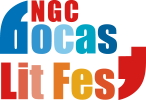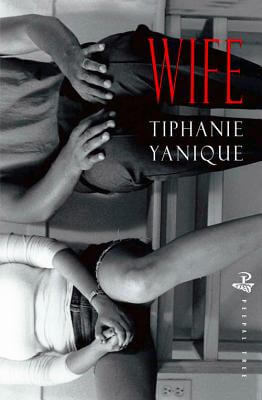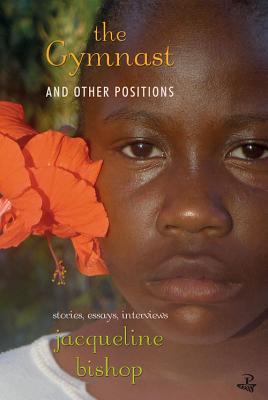The OCM Bocas Prize for Caribbean Literature
 The OCM Bocas Prize for Caribbean Literature is a major award for literary books by Caribbean writers. Prizes are awarded three categories: poetry, fiction, and literary non-fiction; with one book being named the “Overall Winner.” The prize includes an award of $10,000 for the overall winner ($3,000 for the other winners), and is sponsored by One Caribbean Media. The awards are announced during the Bocas Literary Festival which is held in Trinidad & Tobago each spring.
The OCM Bocas Prize for Caribbean Literature is a major award for literary books by Caribbean writers. Prizes are awarded three categories: poetry, fiction, and literary non-fiction; with one book being named the “Overall Winner.” The prize includes an award of $10,000 for the overall winner ($3,000 for the other winners), and is sponsored by One Caribbean Media. The awards are announced during the Bocas Literary Festival which is held in Trinidad & Tobago each spring.
To be eligible for the prize, a book must have been published in the past calendar year, and written by an author born in the Caribbean or holding Caribbean citizenship. Books must also have been originally written in English. Learn more.
3 Books Honored in 2016
Overall Winner (Fiction)
The Pain Tree
by Olive Senior
List Price: $22.95Cormorant Books (Sep 26, 2015)
Fiction, Paperback, 320 pages
More Info ▶
Book Description:
From the author of Dancing Lessons, Finalist for the 2012 Amazon.ca First Novel Award and Finalist for the 2012 Commonwealth Writers Prize, comes an unforgettable collection of short stories. Olive Senior’s new collection of stories - The Pain Tree - is wide-ranging in scope, time period, theme, locale and voice. Her characteristic ‘gossipy voice’ is present in many of the stories, but as well there is reverence, wit and wisdom, along with satire, humour and even farce. The stories range over almost a hundred years, from around the time of the second world war to the present. Like her earlier stories, Jamaica is the setting but the range of characters presented are universally recognisable as people in crisis or on the cusp of transformation.
While most of the stories operate within a realist mode, Senior in this collection is also exploiting traditional motifs, so we have collected here revenge stories (“The Goodness of my Heart”), a bargain with the Devil (“Boxed-in”), a Cinderella story (“The Country Cousin”), a magical realist interpretation of African spiritual beliefs (“Flying”) and a narrator’s belated acceptance of the healing power of traditional beliefs (“The Pain Tree”). “Coal” is a realist story set in the war years and depression that followed as folks try to find a new place in the world. Senior’s trademark children awakening to self-awareness and to the hypocracy of adults are here too, from the heartbreaking “Moonlight” and “Silent” to the girls in “Lollipop” and “A Father Like That” who learn to confront loneliness and vulnerability with attitude.
Synopsis:From the author of Dancing Lessons, Finalist for the 2012 Amazon.ca First Novel Award and Finalist for the 2012 Commonwealth Writers Prize, comes an unforgettable collection of short stories. Olive Senior’s new collection of stories - The Pain Tree - is wide-ranging in scope, time period, theme, locale and voice. Her characteristic ‘gossipy voice’ is present in many of the stories, but as well there is reverence, wit and wisdom, along with satire, humour and even farce. The stories range over almost a hundred years, from around the time of the second world war to the present. Like her earlier stories, Jamaica is the setting but the range of characters presented are universally recognisable as people in crisis or on the cusp of transformation.
While most of the stories operate within a realist mode, Senior in this collection is also exploiting traditional motifs, so we have collected here revenge stories (“The Goodness of my Heart”), a bargain with the Devil (“Boxed-in”), a Cinderella story (“The Country Cousin”), a magical realist interpretation of African spiritual beliefs (“Flying”) and a narrator’s belated acceptance of the healing power of traditional beliefs (“The Pain Tree”). “Coal” is a realist story set in the war years and depression that followed as folks try to find a new place in the world. Senior’s trademark children awakening to self-awareness and to the hypocracy of adults are here too, from the heartbreaking “Moonlight” and “Silent” to the girls in “Lollipop” and “A Father Like That” who learn to confront loneliness and vulnerability with attitude.
Winner Poetry
Wife
by Tiphanie Yanique
List Price: $17.95Peepal Tree Press (Nov 01, 2015)
Poetry, Paperback, 72 pages
More Info ▶
Book Description:
The title of Wife is both ironic and deeply serious. There are wittily sharp poems on the gender inequalities and potential prisons of marriage, that are in dialogue with poems that celebrate the physical joys of intimacy, and poems that explore the processes of self-creation that take place in the closeness to the male other. Their context is a Virgin Islands’ past, a Black American present, and an enlarged human future.
Synopsis:The title of Wife is both ironic and deeply serious. There are wittily sharp poems on the gender inequalities and potential prisons of marriage, that are in dialogue with poems that celebrate the physical joys of intimacy, and poems that explore the processes of self-creation that take place in the closeness to the male other. Their context is a Virgin Islands’ past, a Black American present, and an enlarged human future.
Winner Nonfiction
The Gymnast and Other Positions: Stories, Essays, Interviews
by Jacqueline Bishop
List Price: $23.95Peepal Tree Press (Dec 01, 2015)
Nonfiction, Paperback, 206 pages
More Info ▶
Book Description:
Beginning with the promptings of the transgressively erotic title story, Jacqueline Bishop came to see the hybrid format of this book, with its mix of short stories, essays and interviews could begin to encompass her desire to see where she had arrived at in a creative career that encompassed being published as a novelist, poet, critic and exhibited as an artist. How did these sundry positions connect together? What aspects of both conscious intention and unconscious, interior motivations did they reveal? The stories, none more than a few pages long, can be read at several levels. The mentor who teaches the child gymnast a contortionist’s erotic positions, the adoptive mother who shoots down ex-partner and adopted child when the former debauches the latter as the subject of pornographic photographs; the relationship between tattooist and the woman who offers her naked body for decoration are all sharply and persuasively realized as short fictions, but they also hint at a writer’s interior dialogue and can be read as parables about the relationship between the free imagination and the controlling and even potentially betraying power of art. The essays explore more conscious areas of expression. They deal with the experiences of maternal separation, family histories and mythologies, the search for grounding in the life of a Jamaican grandmother, the relationship with a male writing mentor, travel to Morocco, the inspiration of the writing lives of Jamaicans Claude McKay and Roger Mais and how 9/11 showed her how deeply she had become a New Yorker. The interviews, which investigate sometimes her writing, sometimes her art, and occasionally both, provide context for the stories and the essays. They are at their most revealing when interviewers ask Jacqueline Bishop questions she hasn’t asked herself.Synopsis:
Beginning with the promptings of the transgressively erotic title story, Jacqueline Bishop came to see the hybrid format of this book, with its mix of short stories, essays and interviews could begin to encompass her desire to see where she had arrived at in a creative career that encompassed being published as a novelist, poet, critic and exhibited as an artist. How did these sundry positions connect together? What aspects of both conscious intention and unconscious, interior motivations did they reveal? The stories, none more than a few pages long, can be read at several levels. The mentor who teaches the child gymnast a contortionist’s erotic positions, the adoptive mother who shoots down ex-partner and adopted child when the former debauches the latter as the subject of pornographic photographs; the relationship between tattooist and the woman who offers her naked body for decoration are all sharply and persuasively realized as short fictions, but they also hint at a writer’s interior dialogue and can be read as parables about the relationship between the free imagination and the controlling and even potentially betraying power of art. The essays explore more conscious areas of expression. They deal with the experiences of maternal separation, family histories and mythologies, the search for grounding in the life of a Jamaican grandmother, the relationship with a male writing mentor, travel to Morocco, the inspiration of the writing lives of Jamaicans Claude McKay and Roger Mais and how 9/11 showed her how deeply she had become a New Yorker. The interviews, which investigate sometimes her writing, sometimes her art, and occasionally both, provide context for the stories and the essays. They are at their most revealing when interviewers ask Jacqueline Bishop questions she hasn’t asked herself.



